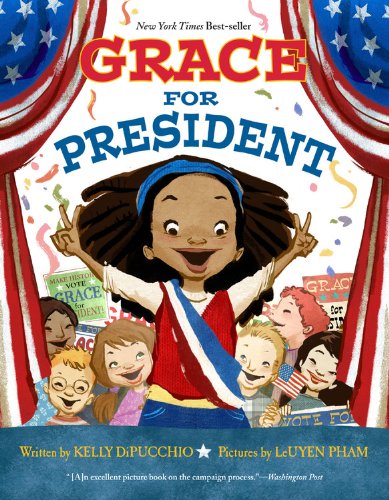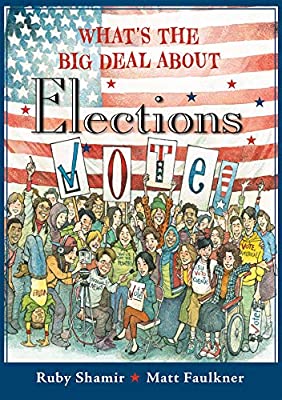With the Presidential Election around the corner, you might be struggling with how to talk to your young children about it all on a relatable level. Reading Partners, an early literacy nonprofit, has curated a book list for parents to start an engaging and entertaining democracy dialogue with their children.
As part of their #RiseUpForReading2020 campaign the book list is designed to spark conversations about democracy and inspire young ones to learn about civic engagement, which quells the confusion – and even fear – around what has been a year of uncertainties.
This resource is one of many that Reading Partners has rolled out for elementary school students in under-resourced schools reading below grade level. A number of free, virtual and even text-rich programs are available via Reading Partners Connects to students across the U.S. to help bridge the opportunity gap.
Here are the organization’s top picks for books about the election:

“Grace for President” by Kelly DiPucchio: The main character, Grace, is shocked that there has never been a woman president. She decides to enter the school election. Readers are exposed to responsible campaigning practices, election conventions, the electoral college and voting. In the end, Grace wins the election!

“Duck for President” by Doreen Cronin: Duck wants to make a change on his farm, so he hosts an election. Once he wins, he sees the work is hard. In an effort to improve work for the “boss” of the farm, he runs for mayor to make bigger changes. Again, he wins, and again he learns leading is even harder at this level. And so it goes until he is president and learns a true appreciation for how much work goes into being a leader.

“What’s the Big Deal About Elections” by Rubi Shamir: A great informational text that shares fun and important facts about elections at a digestible level. It covers everything from why elections are held on certain days to who gained the right to vote and when, and the formation of political parties.

“Lillian’s Right to Vote” by Jonah Winter: This book is a historical account of the struggles of African Americans throughout history, celebrating the Voting Rights Act of 1965. Readers learn about the different policies in place that kept their vote silenced through discrimination and tests. Follow 100-year-old Lillian on her walk to the ballot box as she votes for the very first time.

“If I Ran for President” by Catherine Stier: This book dives into what it takes to be president, including understanding all of the challenges facing the country and the people you represent. Your child will learn the vocabulary of the election process and understand the weight of responsibility for the president.

“When You Grow Up to Vote” by Eleanor Roosevelt: Originally published in 1932, this book, written by Eleanor Roosevelt, explains what our elected officials do as well as each citizen’s role in a democracy. Updates have been made in the rerelease to make it more inclusive through illustrations. The book also talks about all civil servant roles, not just elected officials. Firefighters, teachers and garbage collectors are all highlighted and connected to why voting matters in their chosen field.

“What Can a Citizen Do” by Dave Eggers: This book explores what it means to be a citizen – that as a member of society we have a responsibility to be active and involved. Empowering messages about joining a cause, speaking up or writing letters show how citizens have the chance to change the world.

“Bold and Brave: Ten Heroes Who Won Women the Right to Vote” by Kirsten Gillibrand: This book introduces young readers to 10 American women who worked tirelessly for women’s rights. It focuses on the work of bold, brave activists and suffragists across history and, ultimately, looks optimistically to the future.

“So You Want to be President” by Judith St. George: The book offers a historical look at the first 41 presidents of the United States. Readers will have fun looking at who they were personally as well as what they contributed to our national story.
The links above will take you to the books’ listings on Amazon, but you can also find many at your local library or independent bookstore – which likely offers curbside pickup.
























